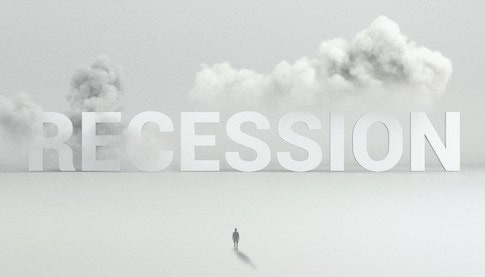The Covid pandemic had a major impact on music festival economics with the cancellations of music festivals having a huge impact. For the most part, large music festivals are back and as popular as ever.
While music festivals have been taking place since ancient times, it was Woodstock in 1969 that set the tone for today’s modern music festivals. Music festivals have grown into a major moneymaking part of the music business with hundreds of such events taking place each year in the U.S. alone. The big ones, e.g., Coachella, Lollapalooza, Outside Lands, Governors Ball, Bonnaroo, feature big ticket prices, endless list of performers, multiple stages, a variety of food vendors, camping options, and an experience beyond the music itself. Unlike other types of live entertainment, music festivals reflect something more as both a status and cultural phenomena with their social media reach.
Along with the big ones, hundreds of smaller, niche, or genre-specific music festivals also flourish. Over the last couple of decades, the music festival scene has become corporate-driven. Mega promoters, i.e., Live Nation and AEG Live have acquired ownership stakes in the largest festivals or the promoters that produce them. Festivals have become another venue for them.
Revenue in the music events market is projected to reach U.S.$ 30.14 billion in 2023, with an annual growth of 5.03%, resulting in a projected market revenue of 36.71 billion dollars by 2027 – Statista.
Today’s music festival economy is seriously big business.
The ownership consolidation underway for the largest festivals is because the music festival business is very risky. Very large festivals face huge outlays of upfront costs for artist guarantees and infrastructure deposits and risk a major financial failure because of weather or cancellation issues. One bad year could put the whole festival in jeopardy. Having a major financial backer like Live Nation with the resources to deal with the risks involved with putting on a mega festival is very attractive to independent festivals organizers. For the mega promoters the risk is worth the rewards involved with the potential for larger returns.
Larger festivals generate 10 to 25 percent profit. As a rule, the larger the festival, the greater the profit margin. Coachella had a reported profit margin of 38% in 2019. – Finmodeslab
Profitability of a music festival depends on a lot of variables with ticket prices, attendance and production costs being the most important ones that organizers can control. Smaller established music festivals tend to make lower profit margins, often in the 5 to 10 percent range.
Music Festivals Involve High Risk
Let’s face it, holding an outdoor event with high costs and many moving parts is a challenge. The high costs involved with producing a music festival include booking talent, locking up venues, and putting into place all the infrastructure and amenities needed can significantly impact the overall profitability of the event. Add the unpredictability of attendance numbers, weather conditions, artist cancellations, and other variables and you end up with a very risky undertaking. In one survey by Eventbrite, 68% of festival organizers reported profitability as their biggest challenge.
Being profitable goes beyond booking the right bands, picking the right location, and driving a successful marketing campaign. Even if the festival is popular, it won’t matter if you’re losing money. It all comes down to revenue and expenses and mitigating the potential for adverse events.
Basic Economic Considerations of Music Festivals
Practically, music festivals have the same income, expense, and economic impact parameters. The difference between mega festivals and smaller community music festivals is the number of zeros involved with them. The profitability of music festivals can vary greatly based on a variety of factors, some you can control and others you can’t. While some risks can be mitigated by insurance and sound planning, It’s important that music festival organizers have realistic expectations for their events. Some important factors include:
The Economy

Since the pandemic, the costs associated with artists and production have increased at alarming rates as all those involved seek to make up for their lost income during the pandemic. In a post-pandemic era, the live music economy in the US remains fragile. Due to inflation, organizers are seeing disproportionate increases in production costs, talent buyouts, and other numerous facets of the live event sphere, according to several events experts across North America.
Organizers deal with inflation by raising ticket prices. Music fans today have more concert and festival options than ever, to both their benefit and detriment, as the national median price for concert tickets jumped to $103.71 in 2022, a 19 percent increase over 2019, according to leading concert industry publication Pollstar. The income levels of attendees are not keeping up with ticket prices, making the job of attracting attendees to festivals even harder.
Brand identity and reputation
Mature events have an established following and reputation. The festivals with the biggest brands sell out before they even announce their lineup because of their fans’ previous experiences at the festival. It’s no secret that new music festivals will take some time to get their brand and reputation established. That means that new music festivals will need to put a lot of thought into their target markets and how best to market and promote to them. A strong marketing strategy and budget is essential to make the event financially viable as it develops its awareness and brand.
Maturity
According to a source, it is not uncommon for music festivals to lose money during their first few years of operation. This is because the initial investment required to organize a music festival can be quite high, and it may take a few years for the festival to establish itself and attract a large enough audience to generate significant revenue. The rule of thumb for new festivals is that it typically takes about three to five years to become financially successful. That’s how long it takes to build the festival brand’s awareness and create a positive reputation.
It’s important that festival organizers understand that up front. While it may happen with a lot of planning, it’s unrealistic to expect a first-year music festival to be profitable. With unrealistic expectations and limited financial backing, an organizer may give up on a music festival before it has a chance to develop a brand and reputation.
Duration
There are few one-day big name music festivals. While some like Coachella early on had one-day entertainment it went to a 2-day format in 2002 and a 6-day event currently. Festivals spanning two weekends typically make more money regardless of lineup popularity. Ticket sales ultimately drive profits, and the more days you can keep customers on festival grounds, the better it is for business.
Assuming set-up costs are relatively fixed, the additional expense of adding extra days is minimal while increasing profits significantly. This may explain why the trend with festivals is to extend the number of days. Mega festivals have added a second weekend to reach 6-day events while others have gone to 4 days.
 Location
Location
Festival venues are chosen based on a number of factors, including size, accessibility, and suitability for hosting large crowds. The location of a music festival can have a big impact on its profitability.
If the event is being held in a major city, there will be more people who are able and willing to pay for tickets. On the other hand, if the festival is being held in a rural area, ticket sales will likely be lower. In addition to ticket sales, the location of a music festival can also affect its sponsorship income. Major corporations are more likely to sponsor an event that’s being held in a city because they know that their brand will be seen by more people.
That may explain why of the 26 largest music festivals, only three are rural. More than half of the 100 or so big music festivals in the U.S. take place in urban centers (55.5 percent), compared to 20 percent in suburbs or exurbs and just 14 percent in rural areas. And music festivals have skewed more urban over time.
Eighty-six percent of today’s large festivals take place in metro areas, up from 75 percent a decade ago. – Bloomberg
Size
The size of a music festival also plays a role in its profitability. Smaller festivals will have lower costs, but they will also bring in less revenue. Larger festivals, on the other hand, will have higher costs but can generate more income from ticket sales, sponsorships, and merchandise sales.
Atmosphere
Fans want the vibes and lifestyle associated with major festivals. The influencers, fashion, and activations will be there regardless of who performs on stage. Meanwhile, most music festivals, especially newer ones, need strong lineups to sell tickets. These festivals are pushing products (the artists) to consumers. After a while, more established festivals can give the audience an idea of what to expect but it takes time to get there. People may say they want a variety of festivals, but what they really want is more of what they already know.
There are others such as revenue streams, competition, gearing the event to target audiences, local support, partnerships, ticketing strategy, managing expenses, etc. that are also very important. Let’s examine how to maximize potential revenue streams as a key economic factor in producing a music festival.
Music Festival Economics: Potential Revenue Streams

- GA Ticket Revenue: Ticketing revenue is the most important part of the festival from a business standpoint. The price of ticket sales for festivals can be influenced by a variety of factors, including the festival’s reputation, the quality of the lineup, and the overall economic climate. Festivals that are able to consistently attract large crowds and secure high-profile acts are likely to generate more revenue from ticket sales and other sources. Organizers must ensure that ticket prices are competitive while still covering their costs and generating revenue. They must also consider factors such as venue capacity, marketing, and logistics, which can all impact ticket sales.
- Tiered Access and VIP Ticket sales: Another great way to provide an extra revenue stream is to offer access to premium content and exclusive parts of the festival for an extra fee. At a basic level, this could be selling final release tickets following a surge in interest once there is limited availability and VIP tickets that can get attendees into restricted areas.
You could also consider selling extra tickets for meet-and-greets with performers or influencers, workshops, and exhibitions. Naturally, any extra on-site events should fit the general theme of the festival.
- Sponsorships: The most important additional income source at a festival is sponsorship partnerships. To secure sponsorships for the event, you have to prove that it will be worthwhile for brands and companies to make the investment. That means ensuring that you offer an attractive and incentivizing sponsorship package.
The music festival industry is a valuable resource for sponsors, who help festivals create memorable experiences, attract loyal fans and spread awareness.
- Merchandise: Think t-shirts, tote bags, posters, and mugs as a bare minimum. So that customers can have a convenient and positive checkout experience. You might also consider having QR codes to facilitate contact-free payments. Sell merchandise along with tickets at your online box office. Sue a number of booths at your festival to sell official merchandise.
- Concession Fees: You can charge food and merchandise vendors a fee in exchange for letting them set up on-site and access crowds of potential customers, or you can sometimes negotiate to take a percentage of their profits. Make sure that there are enough food vendors that people don’t need to wait in long ques. Having a variety of different food options is also important.
- Subscriptions: Another way to expand your revenue is to offer paid subscribers to your festival to have access to exclusive content both online and at the festival. Offer discounts on merchandise, event tickets, or other experiences can make it attractive to attendees to subscribe to your music festival.
- Advertising: You can offer advertising to non-sponsors as another source of revenue. Your online sites could display advertising, including your website, box office, email newsletters and online ticketing confirmations. Other options include flyers, freebies and samples included with VIP goodie bags. Be careful to clearly separate advertising with sponsorship sales and clearly communicate exactly what each will get for their dollars.
- Parking: With many festival attendees driving to the event, parking a great source of additional revenue. You can charge a standard fee for leaving a vehicle in a designated car park, plus higher fees for privileged parking at a more convenient distance to the main site. You may also want to give guests the option of purchasing a parking pass as an add-on while buying their tickets.
- WiFi Access: Crowded events can make cell service Internet access very slow. Providing WiFi access allows attendees to easily share the event and post on social media. Customers will pay to have good access to the Internet for event information and to share their experience at the festival.
- Mobile Phone Charging: Another easy way to make money is to charge for access to phone battery charging facilities. In recent years some Festivals have started taking a different approach by offering rented power banks so that customers don’t have to leave their phones in a locker while they charge.
- Ticket Insurance: More people than ever invest in travel insurance and insurance that will cover the cost of tickets for cancelled events. Music festival organizers may be able to negotiate with insurance companies and receive a commission on insurance premiums they collect from ticket buyers you send their way via a link on their online ticket box office, operating as affiliate marketing.
- Database Access: Database access is where the festival allows advertisers or partners access to email or mail information they have collected from their audience, usually from an event app, mailing list, or from ticket sales. Of course, the works best for established festivals with a larger database of past attendees. One must be careful to not run afoul of consumer privacy protection laws and ask permission to be able to share their data.
- Patrons: Using patrons is a relatively new phenomenon and involves letting individuals donate to support a festival. The festival can recognize these donations and allow the patrons to receive something in return for their level of support.
As you can see, music festival economics involve finding ways to increase the size and number of revenue streams associated with the festival.
Music Festival Economics: Impact on the Local Community
Local festivals are increasingly being used as instruments for promoting tourism and boosting the regional economy. This is often reflected in the level of public assistance made available to them Well planned and run music festivals also offer several economic and social benefits to their communities.
Economic impact studies of music festivals and live events show a positive impact on local communities. Festivals foster event tourism and bring tourists and revenue to a city, and they create jobs, boost tax revenues, and generate business for hoteliers and local businesses. The economic benefits of successful festivals ripple throughout a local economy — affecting tourism and non-tourism-related businesses alike.
The social benefits of festivals are less visible, but they are just as important. Festivals can foster a sense of pride within a community as well as engage and build relationships among community members. They can also celebrate things that make a city special.
Conclusion:
Understanding the economic considerations of a music festival is important for those contemplating organizing a music festival. It’s very important for those involved with new festivals know the profitability implications and the many factors which will impact their success.
Related Posts:
Festival Production: Takeaways from Successful Music Festivals

 Location
Location


